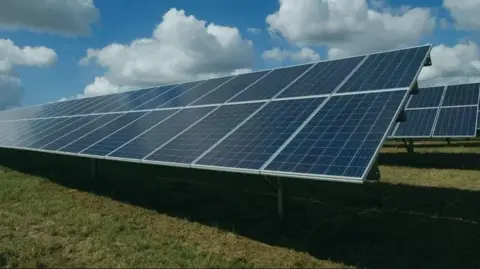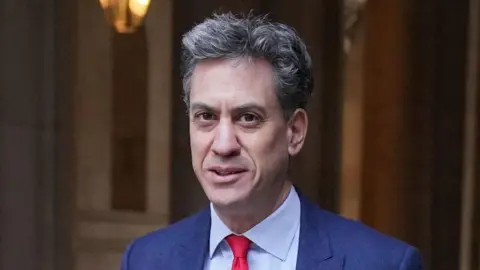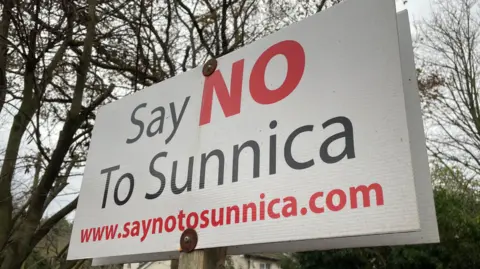How a £600m solar farm plan was given the green light
 Sunnica
SunnicaA controversial solar farm was given the green light in 2024 almost three years after plans for it for first submitted.
But how did we get to this stage, what comes next and will the development impact the surrounding area?
What is Sunnica and what is planned?
Sunnica is a £600m energy farm, set to be 2,500 acres (1,012 hectares) and spread across three separate sites on the Cambridgeshire-Suffolk border.
In July it was approved by Secretary of State for Energy Security Ed Miliband, who described solar power as "crucial to achieving net zero".
Once constructed it will be connected at the Burwell National Grid substation on the border of the two counties via underground cables.
The three main sites for the farm include:
- Sunnica East Site A, near West Row and Mildenhall in Suffolk
- Sunnica East Site B, south of the village of Worlington, near Mildenhall
- Sunnica West Site A, near Newmarket north of the A14 in Cambridgeshire
What is the timeline?
In June 2019, concerns were raised over a solar farm earmarked for farmland on the Suffolk-Cambridgeshire border.
The company Sunnica Ltd said it wanted to create one of the largest solar farms in the country, spanning the equivalent of 900 football pitches.
In December 2021, plans were submitted to the Planning Inspectorate and, at this stage of the process, the company proposed to run the energy farm across four sites - two in Suffolk and two in Cambridgeshire.
A government decision was expected by 28 September 2023 but was pushed back to 7 December that year.
The deadline was moved again to March 2024 and then delayed further, to 20 June.
But this date was disrupted by the then-prime minister's decision to call a UK general election on the 4 July.
 PA Media
PA MediaMr Miliband approved the plans for the solar farm on 12 July and said: "Solar power is crucial to achieving net zero, providing an abundant source of cleaner, cheaper energy.
"Some of these cases have been held up for months before I arrived in the department.
"They were put on my desk on Monday and I've made a decision in three days."
In August Suffolk County Council said it would undertake a legal challenge against the plans alongside West Suffolk Council, Cambridgeshire County Council and East Cambridgeshire District Council.
But soon after, West Suffolk Council and Cambridgeshire County Council chose to withdraw from the process, which resulted in the remaining councils deciding to not continue with the action.
As well as this, the Say No to Sunnica campaign group similarly announced it had withdrawn its own legal bid.
What is next for Sunnica?
Sunnica said it would "move forward towards the implementation phase, ultimately allowing us to create clean renewable energy for the UK".
It added it looked "forward to meeting with local authorities and the wider community to plan the next steps".
Sunnica has been approached for comment.
What will Sunnica bring to the area?
Sunnica says the farm could power up to 172,000 homes and create 1,500 jobs during construction, with 27 full-time jobs to run it.
It hopes the scheme will run for about 40 years and says the land will be returned to its original use for agriculture afterwards.
Following the approval, Sunnica said it was "immensely pleased" and that it would make a "nationally significant contribution toward the UK's legal obligation to reach net-zero emissions by 2050 and its ongoing energy security".
What concerns have been raised?
 Shaun Whitemore/BBC
Shaun Whitemore/BBCMore than 100 people attended a meeting held by the energy firm in Red Lodge, Suffolk in March 2022, with some having to stand outside for two hours as it was so full.
Residents said they were concerned about the size of the site, its location and the use of arable land for the project.
Say No to Sunnica chair Catherine Judkins said villagers were "pretty shell-shocked" when the scheme received approval.
"This land is capable of growing high-value crops," she said.
"It [solar] can go on rooftops, carparks, brownfield sites, we've got landfill sites being covered, not to mention the UK has over 600,000 acres of south-facing commercial roofs."
Follow Suffolk news on BBC Sounds, Facebook, Instagram and X.
